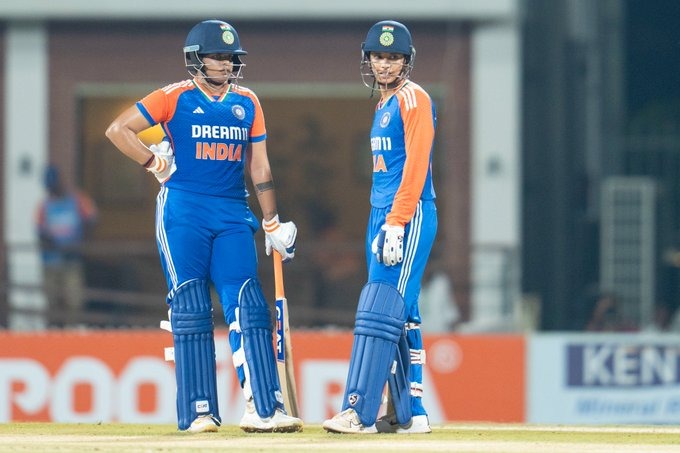
India ended their series against South Africa on a high note, with a resounding 10-wicket win in the third and final T20I. This triumph came on the back of a dominant performance throughout the series, which saw India whitewash South Africa 3-0 in the ODIs and win the one-off Test match. Despite a shaky start in the T20I series, India showcased their resilience and prowess to secure a convincing victory.
The T20I series didn’t begin as planned for India, as they failed to chase a target of 190 in the first match. The second game was washed out, leaving India needing a strong performance in the final outing to clinch the series. The bowlers rose to the occasion, ensuring an easy win in the decisive match.
Batting first, South Africa aimed for boundaries from the start on a pitch that was noticeably slower than the previous ones used in the series. The ball held up, offering considerable assistance to the bowlers. Apart from Tazmin Brits, no other South African batter managed to reach the 20-run mark.
Pooja Vastrakar delivered a fiery spell, taking four wickets, while Radha Yadav bowled with impressive rhythm, claiming three. South Africa was bowled out for a mere 84 in 17.1 overs. The pitch was conducive for 130-140, but in their pursuit of a bigger total, the South African batters faltered. Unlike the first two T20Is, where they targeted the straight boundaries, they struggled, with the ball not coming onto the bat, leading to their downfall. They attempted to hit hard and across the line.
Chasing a modest target of 85, India cruised to victory with ease. Openers Shafali Verma and Smriti Mandhana looked comfortable, with the South African bowlers unable to find any answers to their dominance.
Two critical observations emerged from this series. First, South African bowlers struggled to adapt to the slow conditions, failing to utilise slower balls and slower bouncers effectively. Despite facing conditions similar to those expected in Bangladesh for the upcoming T20 World Cup, the South African spinners did not adjust their pace appropriately. Ideally, in such conditions, bowlers should target a pace of 74-77 mph.
Second, South Africa’s most consistent and lethal bowler, Marizanne Kapp, finally bowled in the series, albeit a bit too late. Kapp, who managed only two overs for three runs, immediately made an impact, troubling Smriti with a peach of a delivery. Her performance was a significant positive for South Africa to take from this series.
Overall, the series belonged to India. Head coach Amol Muzumdar and captain Harmanpreet Kaur had every reason to be pleased, as the team executed plans flawlessly. For South Africa, the form of their captain Laura Wolvaardt and Kapp’s return to bowling were the primary positives.
India will now shift their focus to the Asia Cup, starting their campaign in Sri Lanka against Pakistan on July 19. Meanwhile, the South African players will join their respective franchises for The Hundred competition, which begins on July 23.



